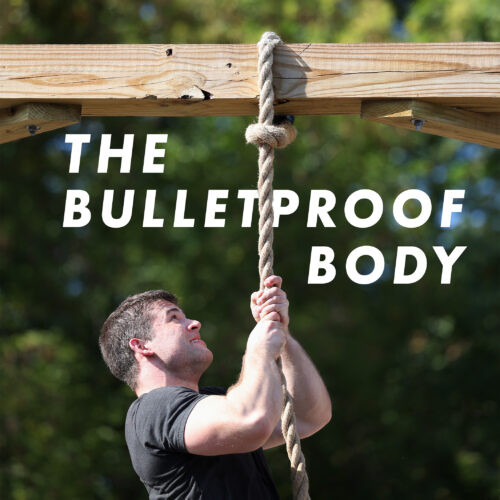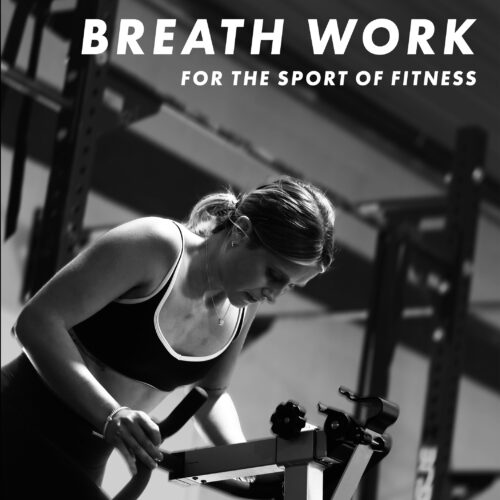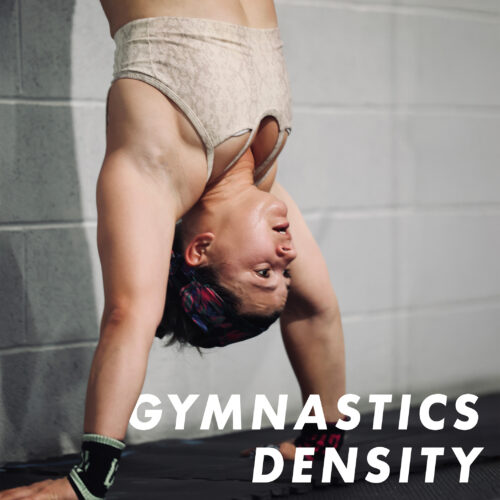Please Let Me Caveat this Conversation
CrossFit® has helped hundreds of thousands, probably millions, of people reclaim a level of fitness and overall function. It’s intense and along the way a lot of people get burnt out -or worse- injured. Burnout and injury happens, even to the best athletes.
Now listen, pain -metabolic & mechanical- and mild forms of injuries are an unavoidable part of sport. They are part of the training process for athletes who are pushing the boundaries of their potential. Change is difficult. Let’s be real: anyone can make a training program where you have almost no chance of injury, but you won’t make progress either. Safety & growth have a relationship in a training program, and it’s about time coaches had real conversations with their competitive and recreational athletes. The true travesty is an athlete failing to make progress and never reaching his or her athletic potential. This means they are on a perpetual training treadmill and going nowhere.
CrossFit® Critiques
This is not an article knocking CrossFit® or its training methodology. Every program ever created has holes is it. And if a training program tries to do everything, it ends up doing nothing. The job of coaches and athletes is to understand this truth and adjust accordingly to offset weak points and avoid pitfalls. CrossFit® has some shortcomings that look like this…
Neglected Area #1: Intensity > Quality (Tempo’s, Pauses, Positional Holds, Mobility, Technique, Skill)
To start, let’s think with a fresh lens on how we view intensity. Intensity is always relative: both a 100m & 10,000m Track Events are performed at 100% intensity. Intensity in CrossFit is not unique in the fact that in order for a level of skill to be maintained, a ‘governor’ must be placed on pace and effort. There is almost always a (red)line that once you cross, there is no return to controlled, precise, efficient movement.
A lot of athletes who train “functionally” don’t consider a workout “good” unless they’ve gone past that redline. The best athletes in the Sport of Fitness don’t do that. They don’t exercise maximally every training session because they know that’s not the way to elite fitness. Rather they take the time to develop skill and fortify it against the stressors of load, speed and various kinds of fatigue in a systematic manner. However, the ability to maintain skill through fatigue is rare. Mainly because…
CrossFit does an excellent job testing and revealing skill, and a pretty poor job of developing it.
The solution to this neglected area is educating the athlete and implementing a plan to address the weaknesses. Slow them down, assign tempos, positional holds, percentage “technique” work, mobility work and take time in non-fatigued environments to learn skills.
Then layer slowly and never stop going back to the basics.
Neglected Area #2: Varied Stances (Hips & Glutes)
Almost all of the movements in CrossFit® involve the feet under the center of mass. Shoulder width squatting, conventional deadlifts, clean & snatches, virtually all Dumbbell work, double unders, etc.
To clarify, these movements definitely harness and effectively ‘work’ the hips & glutes. However, the way in which they do is rather singular. The hips and the way they interact with the core and the legs is very complex and there are many variations of movement that exist, most of which aren’t covered in a bilateral, feet-under-body stance. Running, crossing over, plyometrics and countless other athletic movements don’t fit so neatly into CrossFit’s model. Sure, CrossFit® can technically be anything (in theory), but I’m talking about what we actually commonly see in action in programming.
The solution is vary stance width.
Get wider from time to time with Box Squats, Sumo Deadlifts & Sumo Good Mornings, Lateral Bounds, etc. Your hips will thank you, and so will your weightlifting numbers down the road.
Also, don’t be afraid to move the feet toward -and even across- the midline now & then. A great specific way to do this is Box Step-overs, Curtsy Squats, Ice Skater Jumps, & any unilateral (single leg) work, such as lunges. Balancing on one leg (even if for a moment) requires that foot to be directly under your body to stay balanced.
Neglected Area #3: Horizontal Press & Pull (Pecs & Lats)
In the name of functionality, space, accessibility and monetary barrier to entry, very few CrossFit® gyms have machines you would typically see in conventional gyms. There are often only a few flat benches, and likely no lat pulldown, chest press, chest-supported row, landmines, low rows, cable machines, Viking presses, etc.
As a result, most of the pressing and pulling in CrossFit® workouts is vertical. Pull-Ups, Ring Dips, Muscle-Ups, Cleans, Jerks, Snatches, etc.
Really the only horizontal strict pushing is the occasional push-up or bench press. Burpees are the most common variant. In terms of pulling, the ring row or the row erg are the only common instances.
The solution is to add some focused accessory work that addresses horizontal press and pull. Here are some good examples:
Neglected Area #4: Controlled Eccentrics (Hamstrings Among Others)
Most of the work done in CrossFit® workouts is fast. Hence, most workouts are “For Time” or for “As Many Rounds As Possible” (AMRAP). Athletes are rewarded for rifling through reps. The easiest way to pick up cycle speed in most movements, especially weightlifting (external load), is by speeding up the eccentric (lowering phase).
Again, don’t project too much into what I’m saying here. There is nothing wrong with speeding up reps like this. In fact, it’s an important skill that should be developed, as it can be a separator of good to great athletes in the Sport of Fitness. And for everyday people looking for health and longevity, it’s probably the most effective way to get a “dose” of fitness, barring they move well under the supervision of an experienced coach. That’s a big “if.”
However, too much of one thing leads to neglect of something else. Plus, many athletes are in a position where they have not mastered the motor patterns or motor control necessary for high-speed eccentrics, so they blunt their growth and put themselves as risk for injury.
This error can lead to neglect of several different muscle groups, depending on what movement we are talking about and what movement flaws an athlete possesses.
A common example is an athlete who lacks the proper hinging mechanics to do fast Touch-N-Go deadlifts, so they don’t “own” the range of motion. As a result, the hamstrings take less loading, and over time they atrophy and are used less and less. This is one practical example of how athletes can become “quad dominant” over the course of several years.
The solution is slowing down, literally & figuratively.
Literally slowing down means controlled eccentrics. This is why tempos should be prescribed. In other words, there will be a set number of seconds for each phase of the lift. A back squat tempo of @31×1 means to have a 3s lower, 1s Pause, eXplode up, and a 1s Reset at the top. Tempos should be used heavily in training coming off a competition, then use will wane over the course of the training year as competition prep begins to gear back up.
Figuratively slowing down refers to your mental approach to training. Be in it for the long game. Be willing to build layers slowly and be prepared to spend most of your time building a base. Your positions and technique can never be good enough. Work to find finer and finer points of improvement and chase down the 1%.
Neglected Area #5: Low Intensity (Aerobic System)
CrossFit workouts are infamous for being grueling. You probably signed up because it “kicked your ass.” Now, as we grow as athletes, it’s very important that our view of what makes an effective workout evolves as we do. We shouldn’t measure the quality or “success” of a session by how trashed it left you, how sweaty you got or how sore you became the next day.
Certainly, having a gut-check workout periodically is helpful and even necessary, but we need to make sure we are educating ourselves and our athletes on to relate properly with intensity.
Here’s the bottom line: If you are going 100% every day in Met-Cons or WODs, you are hurting yourself more than you are helping. What feels like a 100% effort, really becomes 90, 80 or even 70%. You can’t “dip as deeply” in your nervous system for those hard efforts, simply because your body is stopping you for protection.
High-intensity is great. It’s the fastest way. The fastest way to both benefits and burnout.
If you are going hard every day, learn to slow down for a few sessions each week.
The solution is to give yourself caps on wattage, pace, reps per minute, breathing patterns (e.g. nasal) and rating of exertion (e.g. 70%). You will stay more aerobic (sustainable) and you will be able to focus better on movement quality and building contraction volume, which are the fundamentals that elite fitness performance is built upon.
Neglected Area #6: Hand Position (Supinated, Clock & Pinch Grips)
One of the most common nagging injuries in CrossFit is medial elbow pain (inside of your elbow on that little bump). It most often occurs for athletes in the Sport of Fitness during rope climbs or kipping Pull-Ups. This “Rope Climb Elbow” occurs because the forearms, wrists and hands are placed in a unique position that isn’t common for CrossFit.
Most of the gripping in CrossFit is pronated (palms down) and involves a closed hand. Virtually all Gymnastics and Weightlifting movements fall into this: Pull-Ups, Muscle-Ups, Toes-to-Bar, Snatches, Cleans, Deadlifts. Even rowing and air bikes have this hand position.
If we always grip things in the same way, it’s a perfect storm for the development of overuse injuries. If athletes (or their coaches) don’t build in grip variance, you are buying time until something breaks.
The solution is doing exercises and using implements that require varied grips. One simple way to create variance in grip orientation is by using dumbbells and kettlebells. By their nature, they move different in space than a barbell creating organic grip variance. Plus the are still more “sport-specific” than a lot of accessory exercises. Next, having a steel mace, clubs, sledgehammers or rope pulls / climbs are great pieces of equipment to incorporate more in the offseason. Lastly, intentionally bias exercise selection to involve different types of grips. Here would be a few examples:
Neglected Area #7: Planes of Movement (Rotation & Anti-Rotation)
Lastly, CrossFit has very little movements that require active rotation or anti-rotation. Of the 15+ perennial movements seen year-over-year in the Open, none of them involve rotation or anti-rotation. The closest we’ve seen is unilateral exercises such as lunges, step-ups and pistols. But truthfully these are pretty mild doses of this form of midline work.
An example of a more potent dose would be “Double Banger” event in the 2012 Games, which had a variant repeated at the 2017 Games called the “Assault Banger.” The rotational power needed for a max effort assault bike (2018), as well as swinging a hammer horizontally (2012) made these great tests of rotational power. Even sprinting (on land & water) requires rotation & anti-rotation, but once again none of these are found at the Open level, mainly because they are difficult to standardize. Many athletic movements common in other sports never show up in CrossFit: throwing, batting, kicking, punching, tumbling / floor gymnastics, racquet sports, SUP (stand up paddle boarding), kayaking and grappling.
The solution is similar to the other neglected areas: incorporate more non sport-specific activities during the offseason. Get outside and enjoy some time on the water. Learn and play new sports. Rather than that just being a good idea…actually do it! And enjoy some novel exercises like punching the heavy bag or swinging a sledge now and again.
Lastly, do accessory work that is designed to develop a well-rounded athlete and plug your personal holes.
An example for anti-rotation would be the Palov Press.
An example of a rotational exercise is the rotating med-ball slam.
Doing accessory work ensures your body won’t break down and you will be able to make progress again in your lifts and conditioning. Think of an accessory program as an all-important ‘reload’ allowing you to power through your next season without injury or breakdown while simultaneously boosting your performance by bringing up weak muscle groups and improving joint resilience.
That’s exactly the goal of my accessory work program.
Bulletproof Body: Accessory Work for Functional Fitness (Program)
Your workouts are intense & your body takes a toll.
Build a body that won’t break down when you go hard and fast.
The accessory work in Bulletproof Body focuses on 3 key avenues of development:
ReGrow
Add Muscle Size + Strength
Potent Protocols Stimulate Muscle Growth
ReStore
Increase Mobility + Positions
Fix Asymmetries with Unilateral Work
ReFresh
Improve Tendon + Joint Health
Prevent Injury & Address Neglected Areas




